Cast Metal Partials
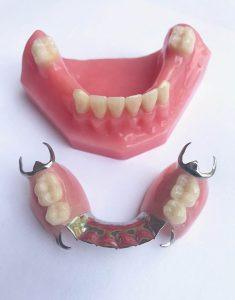
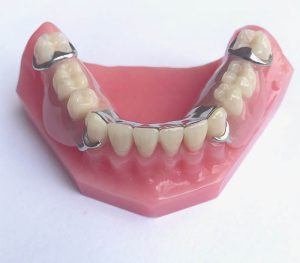
A cast metal partial is an excellent option for people with healthy, solid teeth who have lost a few teeth, Ford said.
“It’s designed to be more passive. It preserves the health of the existing teeth,” Ford said. “There is no movement, no settling because they are designed with a rest. It’s just better as a long-term appliance.”
With a frame made of rigid metal, they are designed to engage with the undercut of the tooth.
“These are typically the most expensive because of the precision and skill required to make the frame,” said Ford.
Acrylic Partials
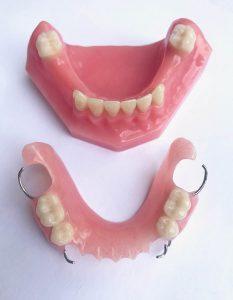
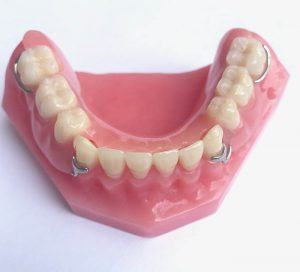
Acrylic partials are completely acrylic except for the wire clasps. They function much like a cast metal partial, but they are more flexible.
These partials are considered more of a temporary appliance. They are also more affordable and can be convenient for a couple of reasons. First, patients can get a partial on the same day they see a dentist. Second, Ford can add teeth to an acrylic partial if a patient loses another tooth. Cast metal partials can’t be updated to add more teeth, he said.
Flexible Partials
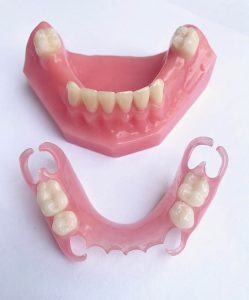
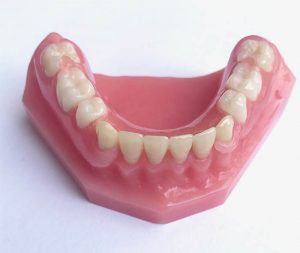
Flexible partials are constructed out of a thermoplastic material that is the same color as the human gum. These thin appliances are comfortable and considered more aesthetically pleasing because no wire is visible.
“It’s more of a specialty item,” Ford said. Flexible partials tend to be pricier than acrylic partials because of the skill required to make them. And, like the cast metal partials, flexibles can’t be expanded to add more teeth or easily repaired if they break or a tooth were to break off.
Talk to your dentist about which option makes more sense for you. Much of it depends on the health of your existing teeth, your comfort, and your budget.
Tips for Wearing Partials
Regardless of the kind of partial you choose, be prepared for some adjustment time once you get your new dental appliance. The American Dental Association offers these tips:
- The partial will feel bulky at first, but give it time and you will become accustomed to wearing it.
- Putting in and taking out your partial dentures will get easier with practice.
- Don’t force the partial denture into position by biting down, or you could bend or break the clasps.
- Follow your dentist’s instructions about when and how long to wear your partial.
- Eating should be easier with a partial, but start with soft foods.

